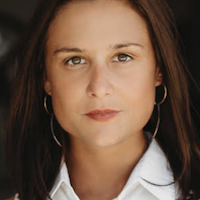To say the world is embarking on a “new normal” begs the question, “what is normal, anyway?”
What each of us perceives as normal—and by that, I mean our everyday reality, including habits, working patterns, relationships, and how meaningful it is to us—can be vastly different from one person to another. Plus, it depends on many factors.
To some, normality speaks of boring, mundane, and average. To others, it’s richly rewarding, diverse, and exciting. Does my normal marry up with your normal? Of course not. We are unique and complex beings, each with our preferences for how we like to live life.
We can’t be prescribed normality as a remedy to a crisis like a doctor would for a common cold. “You’ve had a nasty shock dear, stay in bed, drink fluids, and take two capsules of normality with every meal until life settles down again.”
Being told what’s normal by authority figures is what led me to be confused about the nature of normality in the first place. One normal to rule them all.
The notion that there is only one type of normal, and that we should collectively fall in line for the good of humanity is precisely the problem.
At an early age, we’re often influenced by someone else’s version of normality before we even have a chance to think for ourselves. It can feel awkward and uncomfortable, like an ill-fitting bra that you desperately want to take off at the end of the day.
The bra is your life, and you’re not sure what you’d wear to protect yourself without the flimsy shroud of normal covering up your dignity. We become fearful that we’re nothing without it, so we keep up appearances at the expense of living authentic, healthy, and fulfilled lives.
One could argue that normality is an oppressive term used to describe a version of reality that restricts us of our freedom, individuality, and limits our potential.
“So you’re unhappy? Do what normal people do and ignore it.”
“You want to quit your secure job to become a poet; why can’t you be normal?”
“You’re a 30-something-year-old woman with a collection of my little ponies, is that normal?”
Nobody can tell us what normal looks like, we must go in search of it ourselves.
Several years ago, I woke up to the idea of a new normal in an alarming state of panic. It suddenly hit me, “Is this it?”
The realisation that subscribing to society’s version of normal meant doing what I felt was abnormal to me no longer felt healthy, fulfilling, or sustainable.
Operating under someone else’s normal, I was a subpar version of my whole self. Unable to set my own rules, work schedule, or priorities, I became a train wreck, always one loose wheel away from falling off the tracks.
That is until I set about blowing up normal and recreating life on my terms. Three years down the line, my normal has never looked so good.
After trial and error, I’ve developed new systems for living that align with my core values of freedom, creativity, and independence. These, in return, have helped me design operating models in my business, and healthy working patterns that play to my strengths. They’ve also helped me win back my time and energy so I can experience more joy and fulfilment every day.
Speaking from experience, I can say wholeheartedly that there’s no acceptable manual of “normalness,” except for the one you write for yourself.
COVID-19 has been called “the great pause,” a time for reflection and introspection. It is lifting the veil on outdated modes of living that have failed to fulfill people for decades.
In writing this article, I sought out the voices of other people to gain different perspectives on the new normal and learn what’s shifting at an individual and collective level. Now, we have the opportunity to say “to hell with normality”—billions of people are doing just that.
Having our freedom restricted means many people are deciding to stop limiting themselves by fear or circumstance, and open themselves up to more spontaneity in life, traveling more, and exploring whether locally or further afield.
Horticulture, crafting, and other creative practices are being embraced as enriching, everyday activities, as is being thankful for what we have, creating an attitude of gratitude, and staying present.
Mindfulness, essentially—once a rare hallmark of spiritually minded people—is now regarded as an incredibly rewarding experience practiced by the masses.
“Having the opportunity to go ‘back to basics’ with mindfulness has been incredibly grounding and rewarding,” said a friend.
People want connectivity and are no longer prepared to sacrifice spending time with those they love, and doing things that bring them joy for working on things that don’t.
But, even in a digitally connected world, people are learning to assert healthier boundaries. One friend mentioned being so booked out with virtual catchups at the start of lockdown that she had to start declining in order to gain back her time.
Slowing down and saying “no” more is a theme felt by a lot of people.
An Elephant Journal writer wrote to me, “I realized I was saying, ‘Yes’ too often, in places I should have said, ‘no.’ To avoid being spread too thin, in my new normal, I want to assert healthier boundaries around my time, so I can do the things I choose to do with higher quality. I want to stay slowed down to be more present and mindful with people, projects, self-care, and, at times, I want to do absolutely nothing.”
After a period of adjustment, people have felt freer to set their schedules and incorporate healthy rituals for mind, body, and spirit operating on their own terms.
From what they wear to how they workout, and their daily productivity measure, people are abandoning preconceived ideas of the normal way to do things, and are just doing what feels good instead. Morning routines are embraced with vigour, but daily practices are dynamic, shifting day-by-day to account for our ever-changing energy levels and mood, allowing us to practice self-care more easily.
For another Elephant Journal writer, her 7 a.m. one hour-long gym session transformed to a 20-minute yoga flow or a short run in the park that, according to her, “felt just as good.”
She’s also loving the yoga pants vibe, and is makeup-free most days. “I feel way more comfortable dressing in what feels good—being less performative.”
Then, there are those like me—self-made people who have spearheaded the remote work lifestyle, who aren’t reliant upon outdated societal systems, community processes, and workplace models that fall short in providing for modern needs. The “new normal” they’d constructed meant they weren’t particularly impacted by the fallout from COVID-19 restrictions.
Inspired by their lead, millions of other people—once afraid of the digital world—are jumping on board with the opportunities for increased financial freedom, teaching, and self-education that the internet can provide.
And I, for one, think that’s worth celebrating.
Say goodbye to normal as you know it.
One woman said, “Should we even call this phase ‘normal,’ at all?”
Her argument was, “This is an opportunity to be more self-aware and careful with our language by choosing something more specific like humane, functional, or sustainable. There is nothing normal about any of this.”
Perhaps she’s right. Or maybe, normal is just whatever each of us chooses is best for them.
It’s as much about living without judgment as it is anything else. Yes, free of judgement for others, but also for ourselves—for going our own way, failing, picking ourselves up again, and not knowing whether it’ll work out, but doing it wholeheartedly, anyway.
I’m genuinely inspired by what’s emerging from such a historic time. Considerable shifts in consciousness are allowing us to abandon that which no longer serves us, in ways we could only dream of before.
The normal I am looking forward to now, is one where everyone waves goodbye to the status quo and is courageous, free, and unrestrained in rewriting their normal.
Quoting Sinatra, let your eulogy read, “I did it my way.”
~









Read 6 comments and reply